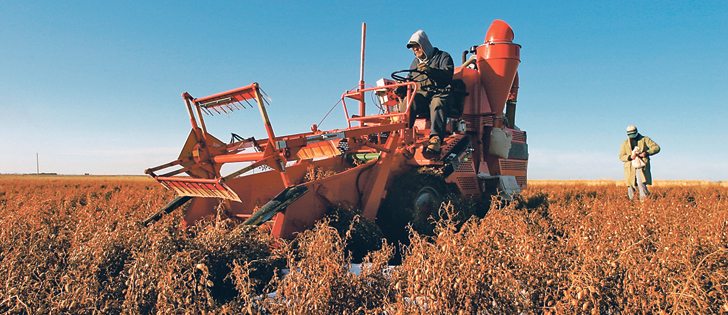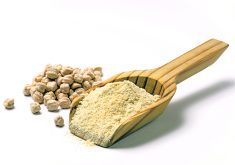Three-quarters of Saskatchewan’s chickpea crop remains in the field and is in terrible condition, say analysts.
Saskatchewan Agriculture reports that 25 percent of the crop had been combined as of Oct. 24, compared to an average of 82 percent for all crops.
“The Canadian chickpea crop is a disaster,” said Marlene Boersch, analyst with Mercantile Consulting Venture.
Saskatchewan grows most of Canada’s chickpeas. The crop that is still standing in the field has not fared well because of the wet conditions and variable temperatures.
Read Also

Defence investments could benefit agriculture
A bump in Canada’s NATO spending commitments could lead to infrastructure investments that would benefit rural areas
“I expect that most of that will not be useable other than for feed, and it is extremely regrettable,” she said.
Alyssa Mistelbacher, market analyst with FarmLink Marketing Solutions, agreed.
FarmLink surveys its farmer clients weekly, and it estimates that 65 percent of the chickpea crop is unharvested.
“The majority of it is going to be non-exportable quality, if not a write-off,” she said.
Bunyamin Tar’an, a chickpea breeder with the University of Saskatchewan’s Crop Development Centre, said the extent of the damage will depend on location, maturity and dampness.
He said the positive thing is that chickpeas are mostly standing rather than lying on the ground like peas and lentils.
“There is still some hope that there is some quality viable for human consumption,” said Tar’an.
It would be a blessing if growers can get into their fields and harvest some decent quality chickpeas because Canada grows kabulis, and the market for that kind of chickpea has exploded.
There are bids of 60 to 65 cents per pound for large calibre kabulis.
Boersch said kabuli prices have taken off because of short crops in Mexico and India.
“It would have been the perfect year to have a little more product and then market it,” she said.
G. Chandrashekhar, a global agribusiness and commodity sector specialist, said today’s prices might not be around for long.
He believes chickpea prices will fall 30 to 35 percent in the next two months as India plants an expected record chickpea crop.
Boersch worries the frustrating harvest could be a real setback for Canada’s chickpea industry.
A lot of effort and levy dollars have been spent developing new disease-resistant varieties with the hope of expanding acreage.
“It’s very regrettable,” she said.
Only a few chickpea handling facilities remain on the Prairies, and they will be hurting because of the lack of exportable product.
Tar’an thinks growers will plant chickpeas again next year if the market remains strong, which he expects will be the case. The only problem will be seed availability.
He advises growers to desiccate the crop when 80 percent of the pods are turning to help ensure they can get it off the field.
They can also plant early maturing varieties such as CDC Leader, which matures 10 days to two weeks before CDC Frontier.
Mistelbacher shudders to think what will happen to the crop if farmers are unable to get back out in their fields before winter.
“It would likely be a write-off if it was out until spring,” she said.
“Crop insurance will be a better play than trying to salvage it.”
Tar’an agreed, but he said farmers may still be able to harvest the crop during the winter so long as it is not buried under snow.
“We did that in our plots. That is still possible,” he said.
Tar’an said the centre is converting all of its chickpea varieties into imy-tolerant lines for improved weed control. The first imy-tolerant varieties should be available to select seed growers in 2018.
















